Bridging Communication Gaps with Technology
Effective communication is a cornerstone of social development in children with autism spectrum disorder (ASD). With recent advances in technology, a variety of innovative tools and interventions have emerged to support peer communication and social engagement in autism therapy. From augmentative communication devices to immersive virtual reality environments, these tools are transforming traditional approaches by providing tailored, motivating, and accessible means for children with ASD to express themselves and connect with others. This article explores the integration of technology in applied behavior analysis (ABA) therapy and other autism interventions, highlighting their benefits, key strategies, and future potential.
Foundations of Applied Behavior Analysis in Autism Therapy
What is applied behavior analysis (ABA) therapy and how is it used to support individuals with autism?
Applied Behavior Analysis (ABA) therapy is a scientifically-supported method that focuses on improving social, communication, and adaptive behaviors in individuals with autism. It uses learning principles and behavioral science to analyze how environmental factors influence behavior. Through techniques such as positive reinforcement and the A-B-C framework — which looks at antecedents, behavior, and consequences — ABA encourages desirable behaviors and reduces challenging ones.
ABA programs are highly personalized. They often include structured training like Discrete Trial Training and naturalistic teaching. Involving parents and peers helps generalize skills across different environments. Research suggests that early, intensive ABA therapy can significantly improve language, social skills, and cognition. Trained professionals called board-certified behavior analysts (BCBAs) carefully design and oversee these individualized plans to support each person’s development and independence.
What are the core principles behind applied behavior analysis used in autism therapy?
Central to ABA is understanding behavior through the A-B-C model: antecedents (what happens before), behavior (the action), and consequences (what follows). Reinforcement, either positive or negative, plays a key role in teaching and maintaining new behaviors.
ABA also uses methods like prompting (helping the child), fading (gradually reducing assistance), and chaining (linking steps of a behavior) to systematically teach skills. Continuous data collection and analysis allow therapists to track progress and adjust approaches accordingly. Understanding the function of behaviors — whether to escape, gain attention, access something tangible, or sensory stimulation — informs the most effective intervention strategies.
How does applied behavior analysis therapy impact the developmental trajectory of children with autism?
ABA therapy helps children with autism by increasing helpful behaviors and decreasing problematic ones through targeted reinforcement. This leads to improvements in communication, social interaction, attention, and day-to-day living skills, which can boost independence.
Individualized, goal-focused ABA plans promote learning by embedding teaching in natural environments. When started early and given intensively — typically 25-40 hours per week over 1 to 3 years — ABA has been shown to produce meaningful gains in language and adaptive functioning. By systematically supporting the child’s development, ABA helps them reach important milestones and enjoy fuller participation in everyday life.
Professionals Delivering ABA Therapy: Training and Roles
Who provides applied behavior analysis therapy and what qualifications do these professionals typically have?
Applied behavior analysis (ABA) therapy is delivered by a range of trained professionals dedicated to improving the functional abilities and behaviors of individuals with autism spectrum disorder (ASD).
Key professionals include board-certified behavior analysts (BCBAs), assistant behavior analysts, registered behavior technicians (RBTs), and other trained ABA technicians. BCBAs often hold master's degrees in applied behavior analysis, psychology, or related fields. They gain certification through organizations like the Behavior Analysis Certification Board (BACB) after completing graduate-level coursework, supervised practical experience, and passing a rigorous exam.
RBTs and technicians usually have focused training and certification tailored to implementing treatment plans under the supervision of BCBAs. This team approach ensures interventions are evidence-based and customized to each child's unique needs.
ABA therapy is provided across a variety of settings including hospitals, schools, specialized clinics, community centers, and home environments. These settings facilitate individualized learning in naturalistic contexts, which supports generalization of skills.
Collaboration is essential in ABA therapy. Professionals frequently work alongside speech-language pathologists, occupational therapists, educators, and medical specialists. This multidisciplinary teamwork fosters comprehensive support, combining expertise to enhance communication, social skills, and other developmental areas vital for children with ASD.
By integrating specialized qualifications, diverse settings, and collaborative practices, ABA therapists deliver effective, personalized interventions that promote meaningful progress for autistic children.
Augmentative and Alternative Communication Tools in ABA Therapy
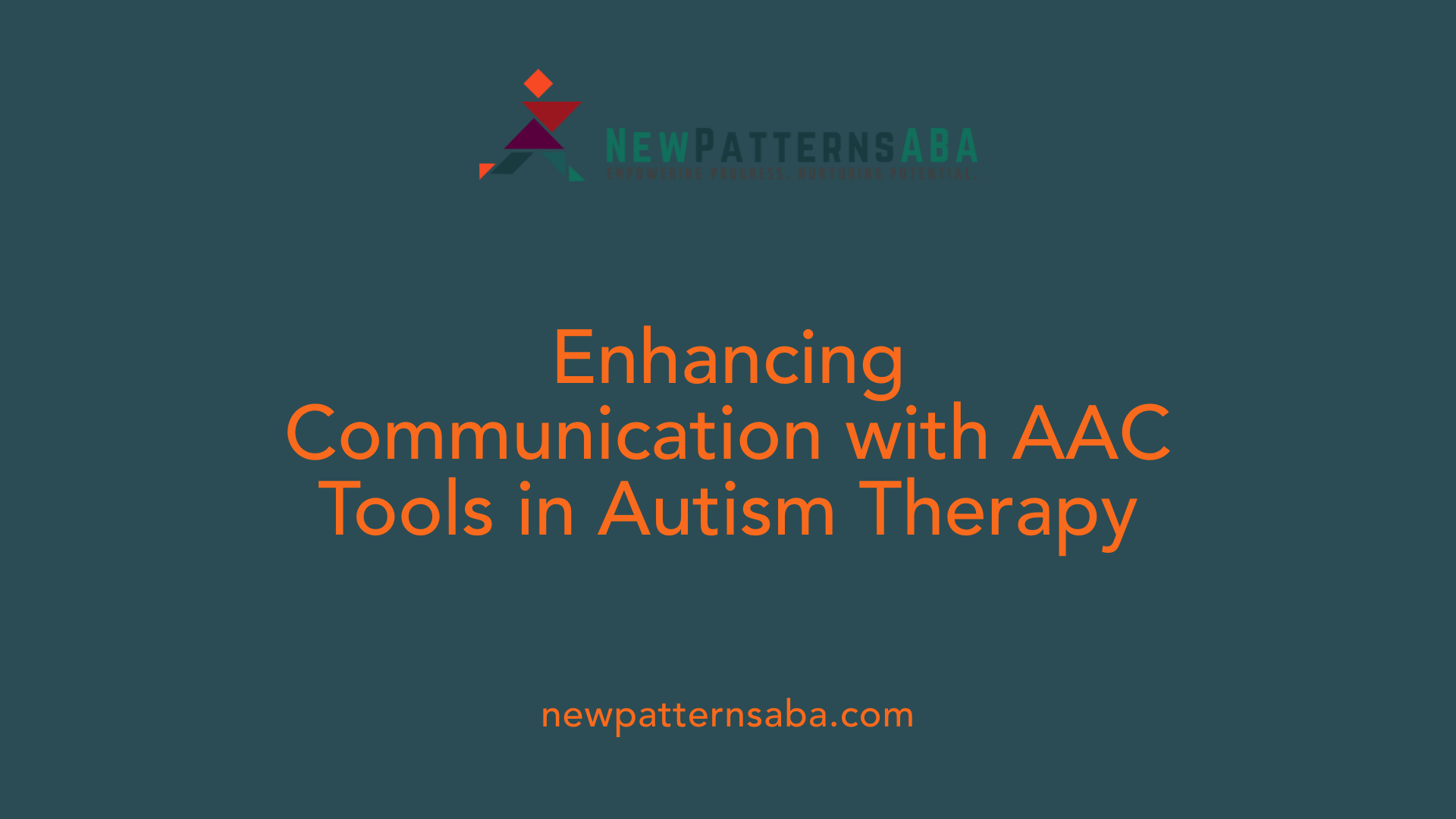
What are AAC interventions in autism therapy?
Augmentative and Alternative Communication (AAC) interventions are vital tools in Applied Behavior Analysis (ABA) therapy designed to improve communication skills in children with autism. They include various methods and devices that help individuals express their needs and emotions more effectively, facilitating better social interactions.
How are AAC systems categorized?
AAC systems are generally categorized into two types:
- Selection-Based (SB) Systems: These involve selecting symbols or pictures, such as the Picture Exchange Communication System (PECS), and are often easier for children with motor impairments to learn.
- Topography-Based (TB) Systems: These rely on communication methods like speech and writing, which may require more advanced motor skills.
What roles do PECS and speech-generating devices play?
PECS is a widely used SB system beginning with teaching requesting without verbal prompts, making it useful for transitioning to more complex communication methods. Speech-generating devices (SGDs), like LightWRITER and Vantage™, offer portable solutions that increase social interactions and are widely accepted among peers. Both methods have been shown to be effective in teaching communication skills, especially requesting behaviors, with each providing unique benefits to users.
How do behavior analysts collaborate with speech pathologists?
Applied behavior analysts work closely with speech-language pathologists to tailor communication interventions that suit each child's unique needs. This interdisciplinary collaboration ensures that the selected AAC methods align with individual challenges and support holistic development. Together, they devise personalized intervention programs grounded in research to optimize communication outcomes for children with autism.
Tablet and Mobile Applications Enhancing Communication and Social Skills
Popular Autism Communication Apps
Tablet and mobile applications have become instrumental in supporting communication for children with autism spectrum disorder (ASD). Notable apps, such as Proloquo2Go and TOBY, are widely used tools that offer customizable communication interfaces and structured teaching modules. Proloquo2Go facilitates expressive communication through speech-generating capabilities, while TOBY (Therapy Outcomes by You) provides a comprehensive, evidence-based curriculum tailored for early autism intervention.
Gamification and Engagement
Gamification elements embedded within these applications significantly boost motivation and participation. By incorporating game mechanics like rewards, levels, and interactive challenges, apps such as Zirkus Empathico and Secret Agent Society create engaging experiences that make learning social and communication skills enjoyable. This playful approach encourages sustained user involvement, which is crucial for therapy success.
ICT-Based Interventions Like Serious Games
Serious games represent a subset of ICT interventions designed specifically to teach social-emotional skills. These digital games simulate real-life social scenarios allowing children to practice interpreting emotions, recognizing facial expressions, and engaging in social exchanges within a controlled, safe environment. Studies have shown that children using these tools demonstrate improvements in affect recognition and communication, often surpassing results from traditional therapeutic methods.
Benefits of Interactive Digital Tools for Therapy Participation
Interactive digital tools not only engage children through visual and auditory stimuli but also provide predictable and structured environments that cater to the unique learning needs of children with ASD. Tablets and mobile devices enable therapists to customize content, track progress in real-time, and adjust strategies accordingly. Furthermore, these technologies offer versatility, portability, and accessibility, facilitating therapy both in clinical settings and at home, which contributes to more consistent practice and faster skill acquisition.
Virtual Reality and Social Robots: Immersive Technologies in Autism Therapy
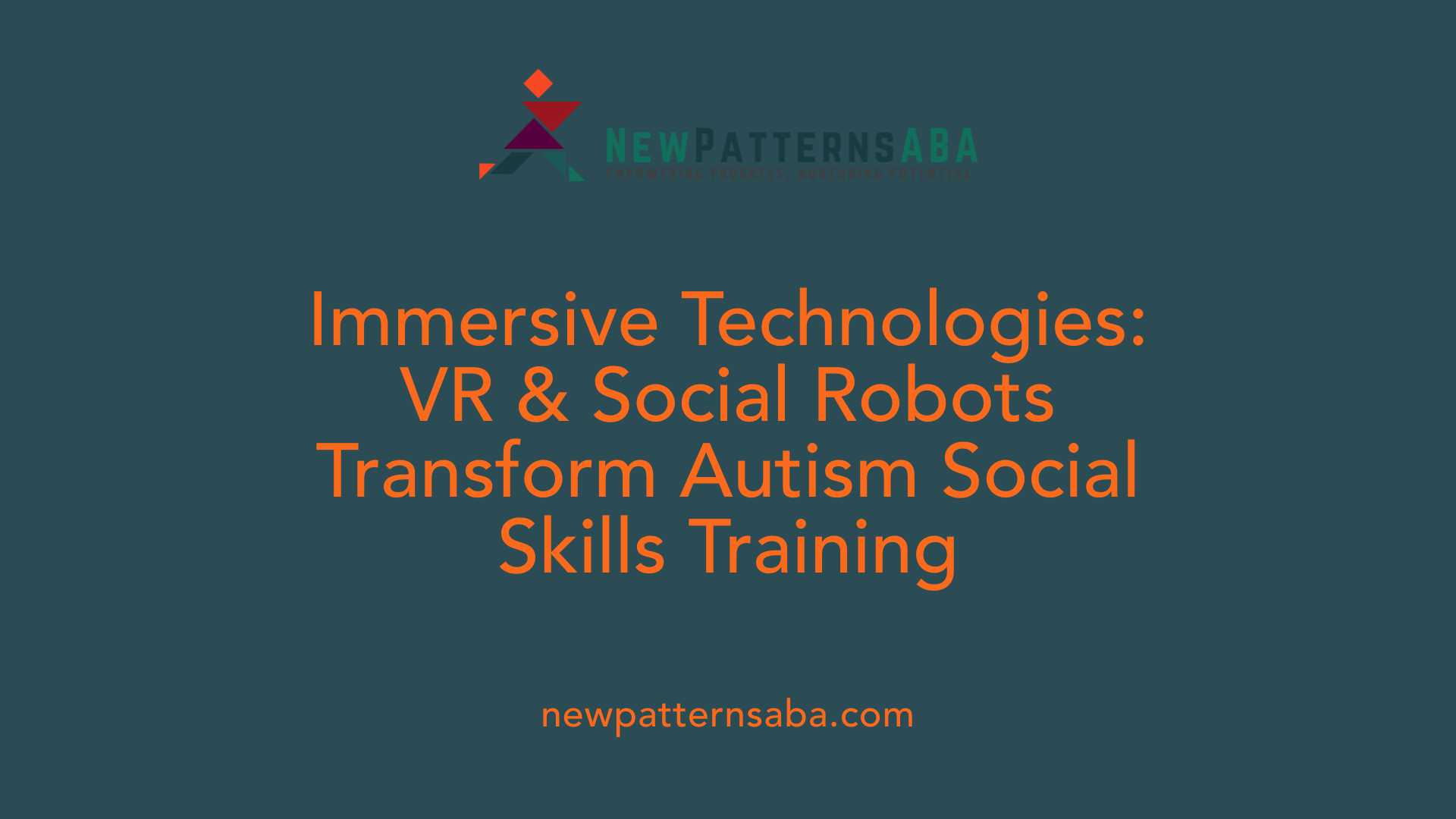
How is virtual reality used in social skills training for autism?
Virtual reality (VR) technology offers immersive environments where children with autism spectrum conditions (ASC) can practice social interactions in realistic yet controlled settings. These virtual scenarios simulate everyday social situations, allowing children to learn and rehearse appropriate responses without the unpredictability of real-world encounters. This approach enhances confidence and prepares children for actual social engagement.
What types of virtual scenarios support interaction practice?
VR creates diverse, interactive social scenarios, such as classroom settings, playgrounds, and family gatherings. These tailored environments encourage children to recognize social cues, initiate conversations, and respond to emotional expressions. The immersive nature of VR helps maintain focus and motivation, fostering faster and more stable acquisition of social skills.
Which social robots are used in autism therapy?
Several social robots have been integrated into autism therapy, including NAO, iRobiQ, CARO, and PLEO. These robots serve as engaging therapy partners that provide predictable interactions, which can reduce anxiety and encourage participation. Their programmable nature allows customization based on individual therapeutic goals.
How do VR and social robots impact engagement and social cognition?
Studies show that VR and social robots significantly increase children's engagement during therapy sessions. The interactive and motivational qualities of these technologies enhance attention and active participation. Moreover, they contribute to improvements in social-emotional skills, affect recognition, emotion understanding, and overall social cognition compared to traditional face-to-face approaches. By offering consistent, adaptable, and enticing learning tools, these technologies support meaningful developmental progress in children with autism.
Assistive Technologies and Wearables: Monitoring and Supporting Communication
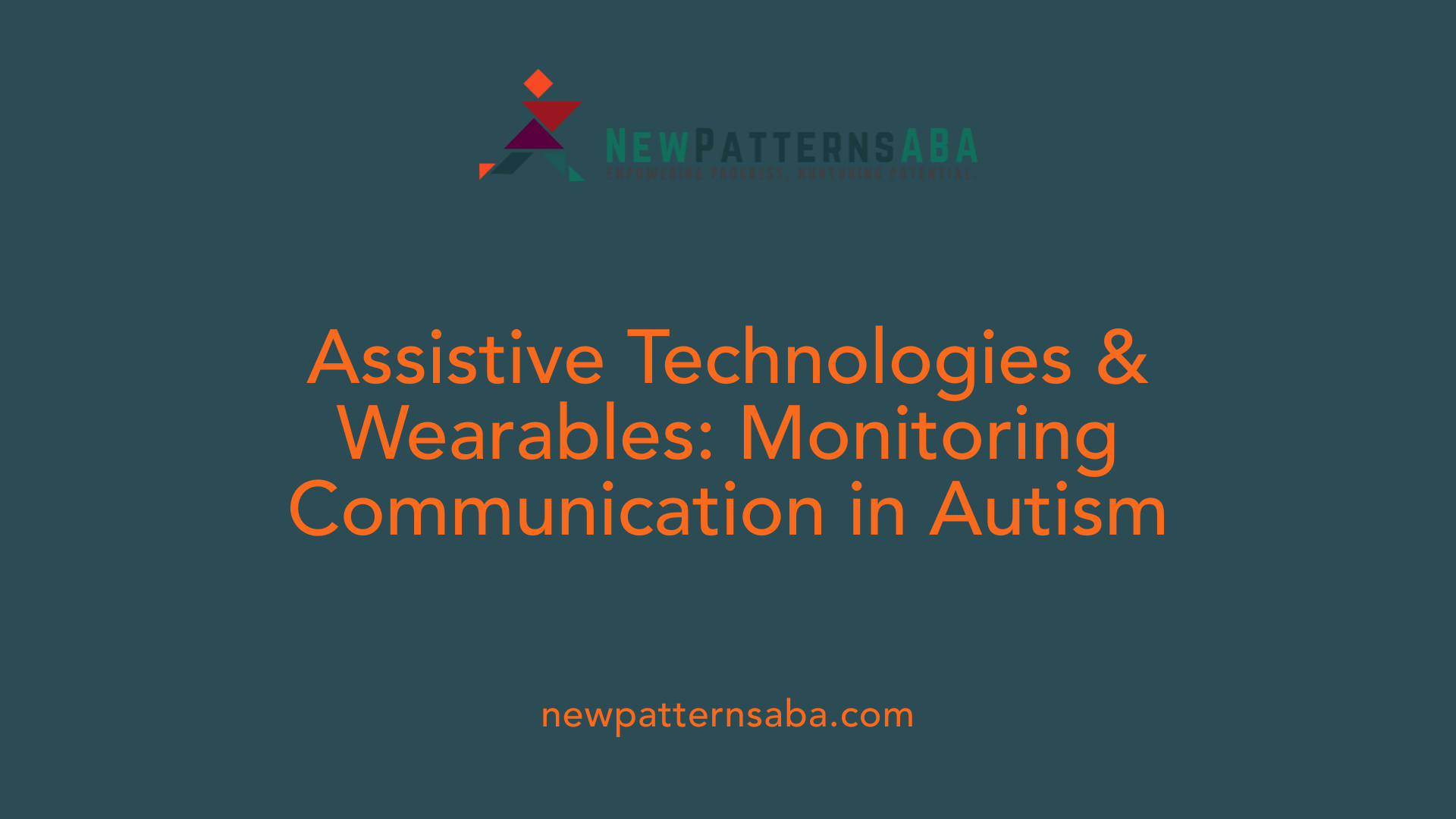
What are speech-generating devices and communication boards?
Speech-generating devices (SGDs) are portable tools that help children with autism express their needs and emotions more effectively, promoting social interactions. Examples include the LightWRITER and VantageTM devices. These tools are widely accepted among peers and can enhance social engagement, although they typically require additional materials and training.
Communication boards are simpler assistive tools, available in both high- and low-tech forms, designed to facilitate parent-child bonding and promote communication. They serve as selection-based augmentative and alternative communication (AAC) options, such as the Picture Exchange Communication System (PECS), which is effective in teaching requesting skills without needing verbal prompts.
How do wearable devices assist in physiological monitoring?
Wearable technologies, like smartwatches, monitor physiological responses such as heart rate and physical activity in children with autism. These devices provide real-time data that enable caregivers and therapists to track behavioral patterns and adjust interventions accordingly. By alerting caregivers to specific physiological changes, wearables support more personalized therapy and timely responses to potential distress or anxiety.
What assessment technologies are used in supporting communication?
Eye-tracking technologies, including paradigms like Looking-while-listening (LWL) and intermodal preferential looking (IPL), provide insights into language understanding and processing speed. These assessment tools allow therapists to tailor interventions according to individual language comprehension and engagement. Such technologies offer a non-invasive, evidence-based method to monitor progress and adjust therapy goals.
How does data collection and real-time behavior tracking enhance interventions?
Digital tools and apps facilitate real-time behavior tracking by allowing therapists to instantly document behaviors and interventions. Visual analytics such as graphs and charts illustrate behavior trends and progress, fostering transparency and collaborative decision-making with families and stakeholders. Moreover, behavior tracking apps empower families to log observations outside therapy sessions, promoting continuous, personalized support.
Together, these assistive technologies and wearables improve the precision, efficiency, and accessibility of autism therapy, supporting communication development and enabling customized interventions.
| Assistive Technology | Purpose | Benefits |
|---|---|---|
| Speech-Generating Devices | Express needs and promote social interaction | Portability, peer acceptance, enhanced communication |
| Communication Boards | Facilitate communication and bonding | Simplicity, suitability for all motor skills |
| Wearable Devices | Monitor physiological responses | Real-time alerts, personalized therapy |
| Eye-Tracking Technologies | Assess language comprehension | Tailored intervention, non-invasive |
| Behavior Tracking Apps | Record behaviors and illustrate progress | Improved collaboration, timely adjustments |
Telehealth and Remote Access to ABA and Communication Support
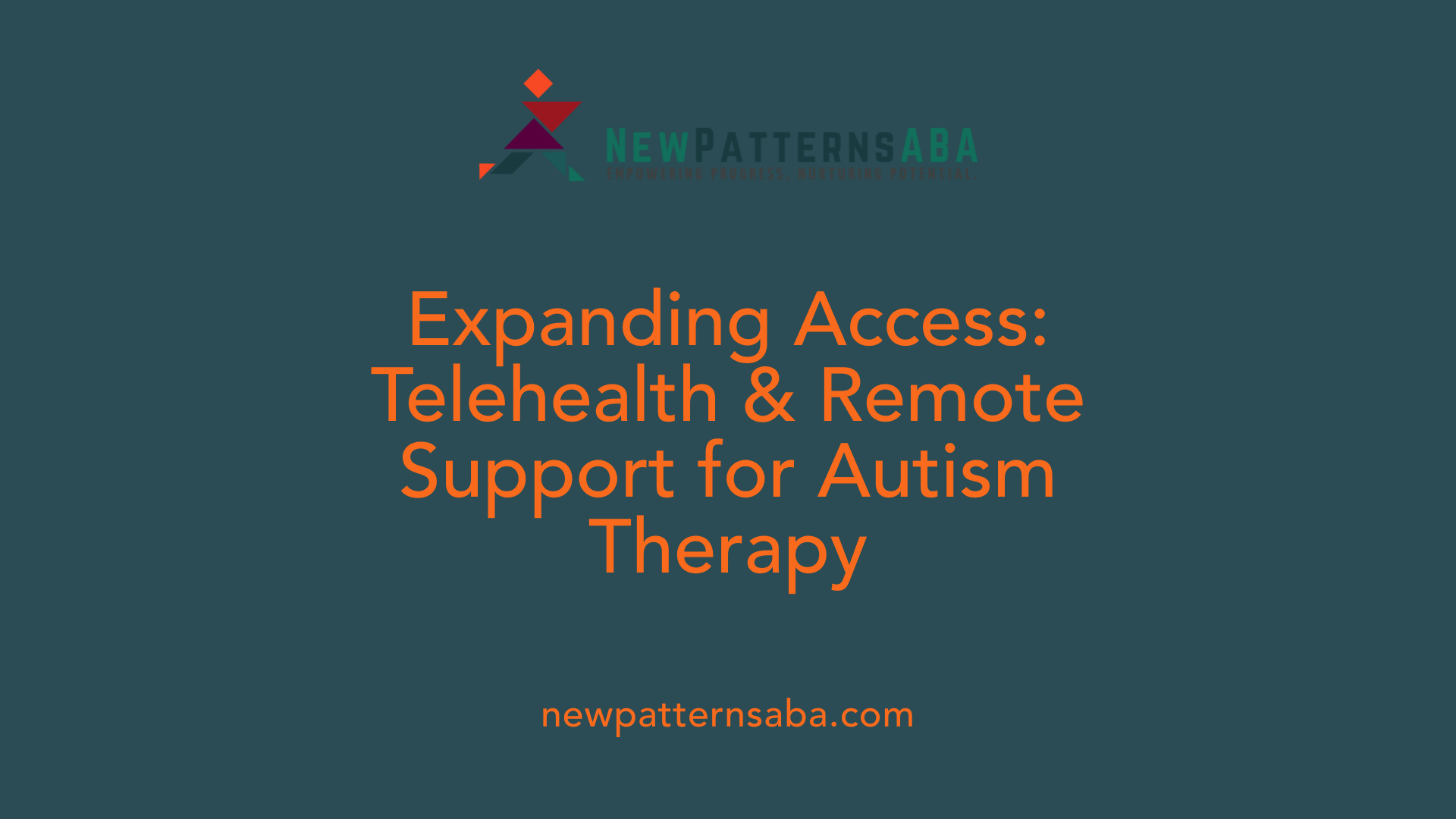
What are telehealth platforms for ABA therapy?
Telehealth platforms enable the delivery of Applied Behavior Analysis (ABA) therapy through video conferencing. These platforms facilitate functional analyses, naturalistic teaching, behavioral support, and training remotely. They are particularly valuable for extending ABA intervention beyond traditional clinic settings.
How do telehealth services benefit remote and mobility-challenged individuals?
Telehealth dramatically improves access to ABA therapy for individuals who live in remote areas or have mobility challenges. By eliminating the need to travel, it ensures that therapy sessions are more consistent and accessible. This flexibility also accommodates individuals with anxiety or other conditions that make in-person visits difficult.
What are behavior tracking apps for families?
Behavior tracking apps allow families to log behaviors outside therapy sessions in real-time. These applications provide instant insights and promote a collaborative approach between therapists and families, enabling timely interventions based on ongoing behavioral patterns.
How do online parent training resources contribute to communication support?
Online parent training resources empower families by equipping them with effective techniques and strategies to reinforce skills learned during therapy. These resources strengthen home-based support, enhancing the overall efficacy of ABA interventions and communication development.
Telehealth and digital tools together form an integrated system that increases accessibility, engagement, and personalized care for children with autism. By combining remote therapy with real-time data and parent involvement, these technologies represent a significant advance in supporting communication and behavioral skills development.
Integrating Data Analytics and AI in Autism Communication Therapies
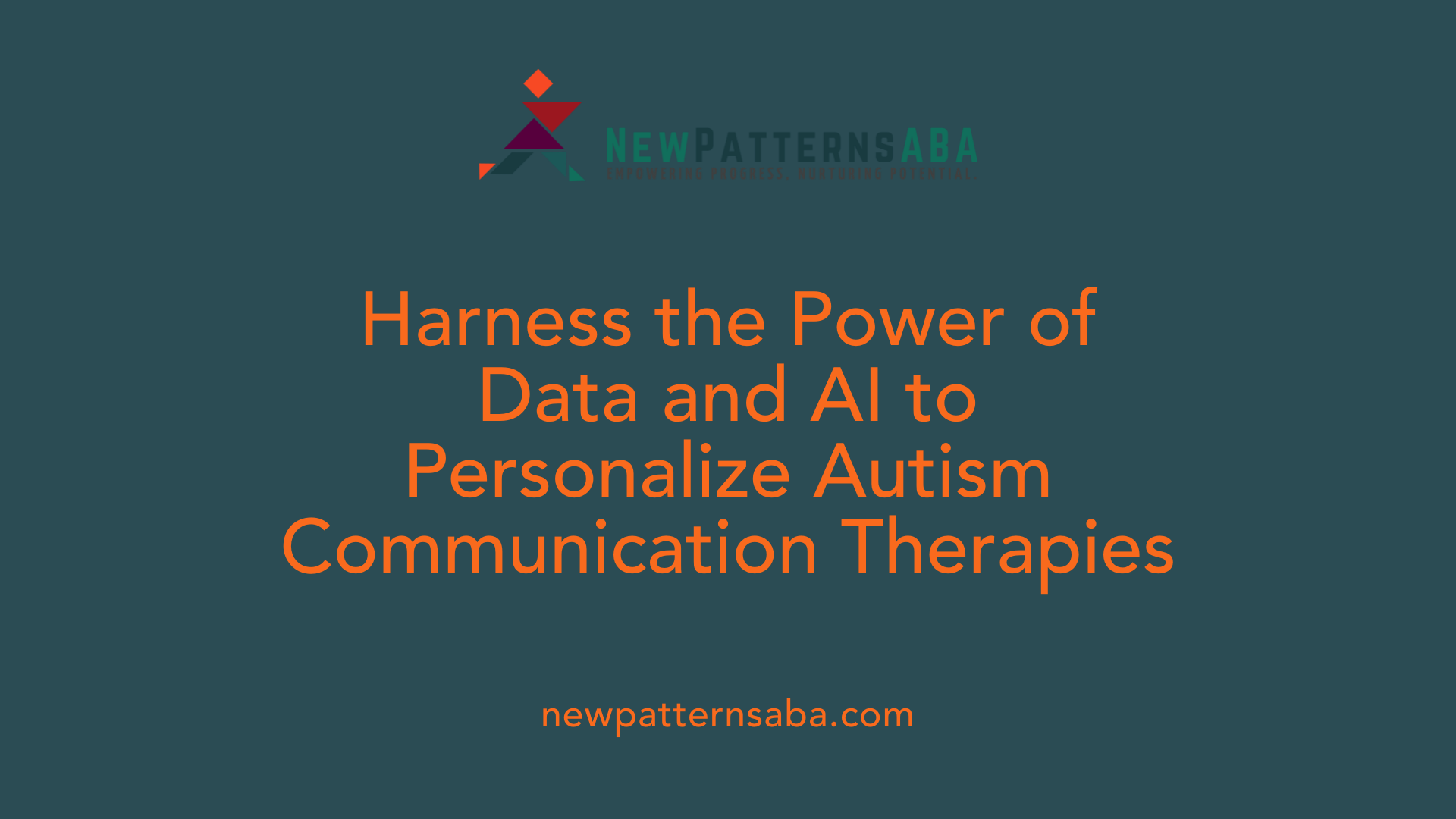
How is digital data collection and analysis used in autism communication therapies?
Digital data collection and analysis have become essential tools in applied behavior analysis (ABA) therapy for children with autism. Therapists employ digital tools and apps on devices such as computers and smartphones to instantly record behaviors during sessions. This seamless documentation allows therapists to monitor behavior patterns in real time, enabling timely and targeted interventions tailored to each child's unique needs.
Visual analytics, including graphs and charts generated from this data, illustrate behavior trends and progress clearly. These visuals foster transparency and enhance collaboration between therapists, parents, and other stakeholders, ensuring that everyone involved has a shared understanding of the child's development.
What role do AI and machine learning play in these therapies?
Artificial Intelligence (AI) and machine learning techniques are increasingly integrated into autism therapies to stimulate engagement and assess children's involvement. Through advanced video and audio analysis, AI algorithms monitor how children interact during therapy sessions, identifying behaviors and engagement levels that might not be easily detected by human observers. Specifically, robot-based interactions powered by AI have shown to increase engagement in children with autism.
Additionally, AI-driven virtual assistants and wearable devices contribute to monitoring behavioral patterns and physiological states, enabling a more comprehensive understanding of each child’s needs and responses.
How do these technologies help monitor engagement and behavior trends?
By combining real-time data tracking with AI-based analysis, therapists gain a dynamic picture of engagement and behavior fluctuations. Wearable technologies, such as smartwatches, provide physiological data that can be cross-referenced with behavioral records to better interpret triggers or progress.
This continuous monitoring allows for adaptive therapy sessions where strategies can be adjusted promptly to maintain or increase a child’s motivation and participation. Tracking long-term trends also helps in assessing the effectiveness of interventions over time, paving the way for improvements in therapy plans.
What are the benefits of integrating data analytics and AI for personalization and transparency?
One of the primary advantages of integrating digital analytics and AI in autism communication interventions is the ability to personalize therapy with high precision. These technologies facilitate the tailoring of communication tools and behavioral strategies to meet the specific challenges and strengths of each child.
Moreover, by providing accessible and visual data reports, these methods promote transparency. Families, therapists, and educators can track progress collaboratively, ensuring that all parties are informed and engaged in decision-making. This transparency supports consistent and informed adjustments to therapy, ultimately improving outcomes for children with autism.
Considerations and Challenges in Implementing Technology Tools
Why is individualized tool selection important in autism therapy?
Selecting the right communication and intervention tools is crucial because children with autism spectrum disorder (ASD) exhibit diverse needs and varying severity levels. Tailoring technology use to each child's unique communication challenges ensures better engagement and effectiveness. For instance, some children might benefit more from selection-based augmentative and alternative communication (AAC) systems like the Picture Exchange Communication System (PECS), which requires less motor skill demand, while others may excel with speech-generating devices that promote social interaction.
What challenges arise when integrating technology into autism interventions?
Implementing technological tools in autism therapy faces several obstacles. Privacy concerns are paramount when handling sensitive behavioral and physiological data collected by devices such as smartwatches or eye-tracking systems. High initial costs of acquiring advanced technology like tablets, virtual reality systems, and social robots can limit accessibility. Additionally, there is a risk of over-reliance on devices, potentially reducing face-to-face social interaction opportunities unless carefully managed.
What training do professionals and families need for effective technology use?
Successful deployment of technology in therapy demands specialized training for both clinicians and families. Therapists must master device operation, data interpretation, and apply evidence-based interventions through technology platforms. Families benefit from instruction on using communication boards, apps, or telehealth tools to reinforce skills between sessions. Digital literacy supports real-time behavior tracking and enables parents to collaborate effectively in their child's development.
How can technology use be balanced with traditional approaches?
While technology enhances personalization and engagement, it should complement—not replace—traditional face-to-face methods. Combining digital interventions with established behavioral therapies, such as Applied Behavior Analysis (ABA) and direct social skills training, ensures comprehensive support. This blended approach maintains human connection and addresses multiple developmental domains, optimizing outcomes for children with autism.
In sum, the integration of technology into autism therapy requires thoughtful consideration of individual needs, resource constraints, training requirements, and a balanced use alongside conventional practices to maximize benefits and overcome challenges.
The Growing Role of Technology in Autism Communication Therapy
The integration of technology tools within autism therapy, particularly applied behavior analysis, represents a transformative advance in supporting peer communication and social skills development. From augmentative communication systems and mobile applications to immersive virtual reality environments and social robots, technological innovations facilitate more engaging, personalized, and effective interventions. Combined with skilled professional guidance and data-driven strategies, these tools enable children with autism to achieve meaningful improvements in communication and social interaction. Despite challenges such as privacy considerations and the need for specialized training, the potential benefits underscore the vital role of technology in expanding access, enhancing therapy outcomes, and empowering individuals with autism and their families.
References
- Instruments for augmentative and alternative ...
- Information and communication technologies-based ...
- 4 Methods for Increasing Communication Within Applied ...
- Utilizing Technology in ABA Therapy for Better Outcomes
- ABA and Technological Advancements
- Applied Behavior Analysis (ABA)
- What Is Applied Behavior Analysis - Exploring ABA ...





